#StandardsoftheTeachingProfession
Explore tagged Tumblr posts
Text
Indigenous connections through mahi toi
As part of our summer intensive teaching course in our host school, it was required to create and develop a lesson for our tauira. Considering my cultural background, I wanted to create a lesson to connect Indigenous knowledge from Mexico and Aotearoa from a decolonising design perspective like my PhD research. During my PhD journey, I learned from my supervisor Dr Jani Wilson and her research in mahi toi that this term aligns better to my views on art, design and craft, different from the Western perspective where these are classified and assigned hierarchies. Therefore, approaching mahi toi practice seemed an appropriate and hands-on activity to be developed during class.
As part of our team teaching approaching Cultural Identity, I design a lesson for students to make an Indigenous Mexican mahi toi (aka artesanía). The following description and reflection were part of my submitted assignment.
Making a Sikuli, Ojos de Dios, God’s Eye

Learning Intention:
To understand and reflect on the importance of mahi toi (design, arts and crafts) for Indigenous people.
To connect Māori worldview with Indigenous Mexican worldview (Mesoamerica).
Success Criteria:
To build a God’s eye (Ojo de Dios, Si’kuli) from Huichol (Wixarika), Indigenous people from Mexico, and each student to connect it with Māori identity or value attaching a symbol/pattern or word in a mobile element at the bottom of the piece.
Reflection
Displaying mahi toi from Mexico (design, arts, crafts, textiles) around the room helped to raise the interest of the students towards the topic. It also helped to explore and understand what the students’ previous knowledge on the topic was. Also, the diversity of books like world atlas, archaeological, stories and comic books about Mexico was an easy introduction and an aid to settle the students on arrival or during the exercise. This different medium aligns to Ako from Te Kotahitanga (Bishop & Berryman, 2009) by providing different teaching strategies. It also provides a sensorial experience appealing students that are visual and kinesthetic, to mention some.

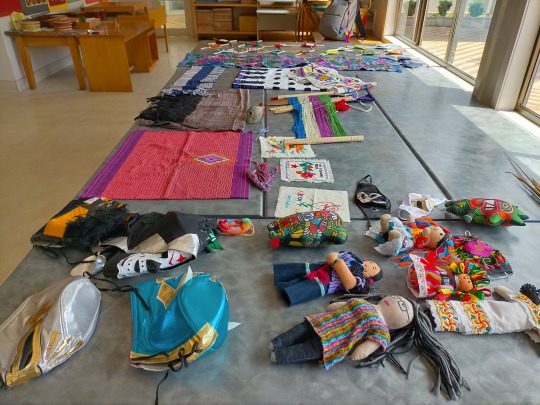
Connection to Te Ao Māori was directly shown in the work of some students. For example, one student described her work using the colour of the Tino Rangatiratanga flag. This aligns to Ako and the respect and understanding on Māori culture and beliefs (Bishop & Berryman, 2009).
Symbolism through colours scheme, and the connection of mahi toi with cultural identity and wellbeing is visible in the description of colours in relation to emotions. The New Zealand curriculum mentions the importance of wellbeing in students for effective learning and to support lifelong learning (Ministry of Education, 2007).

At the beginning, some sessions had a slow start requiring more encouragement and direct/personal demonstrations from my part to keep students engaged. Once the students understood and started the making process, they became engaged in the activity and kept working individually or alongside their peers.
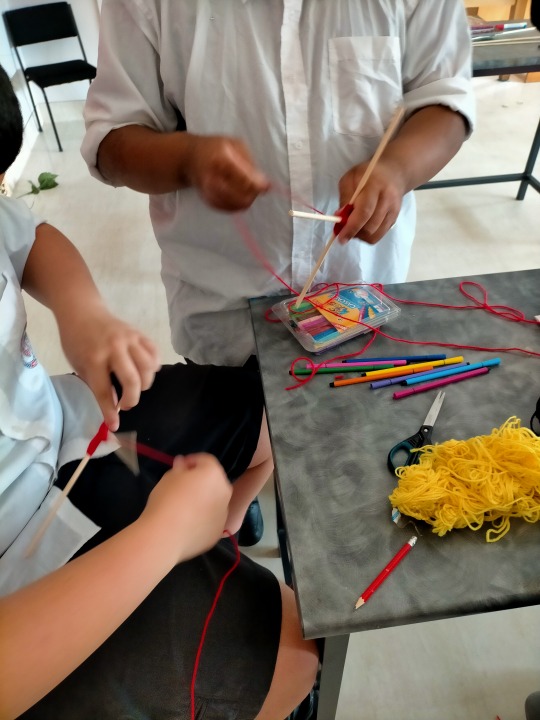
The last day of the session there were more students than scheduled. One student came back again after even though he took the same session on the first day, and two students who were not enrolled, perhaps because they missed the first days or because they belong to other classes, joined and they even created their own God’s eye, Si’kuli or Ojo de Dios.
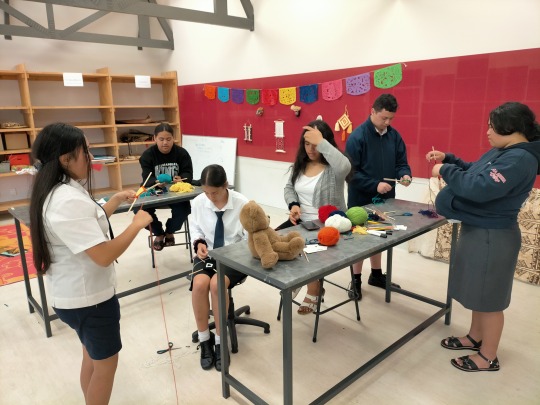
Also, in the last session, some students asked me to teach them dances we do in Mexico. So, we had an improvised dance session of Latin rhythms like cumbia and bachata. I think this last session was the most fun for all of us. They asked to take some pictures at the end of the class. These images became an important taonga of my experience. This experience link to the importance of developing strong connections with students through manaakitanga and whanaungatanga (Ministry of Education, 2011).
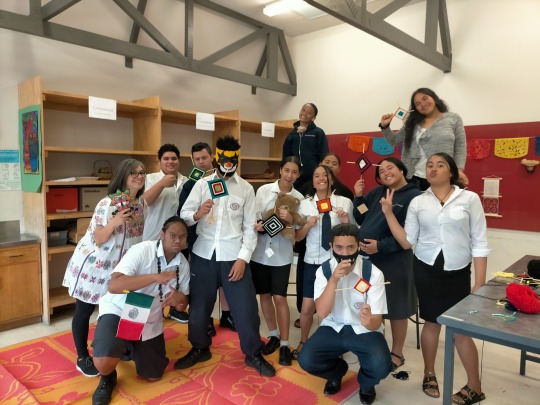
The installation in the presentation day showcased the results of the sessions, displaying los Ojos de Dios made by the students during the three days. The change of location for the installation brought uncertainty and lack of preparation from my side by not knowing the space. It is important to know the space in advance to plan accordingly.
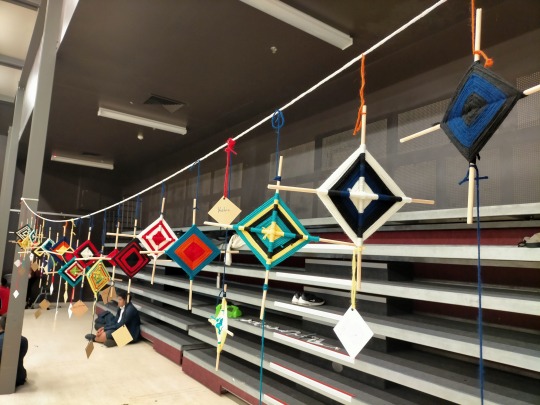
Connection to Standards
Standard 1: Te Tiriti o Waitangi partnership Standard 2: Professional learning Standard 4: Learning-focused culture Standard 5: Design for learning Standard 6: Teaching
#STP1#STP2#STP4#STP5#STP6#StandardsoftheTeachingProfession#MahiToi#Design#IndigenousKnowledge#DecolonisingDesign#CulturalIdentity
0 notes